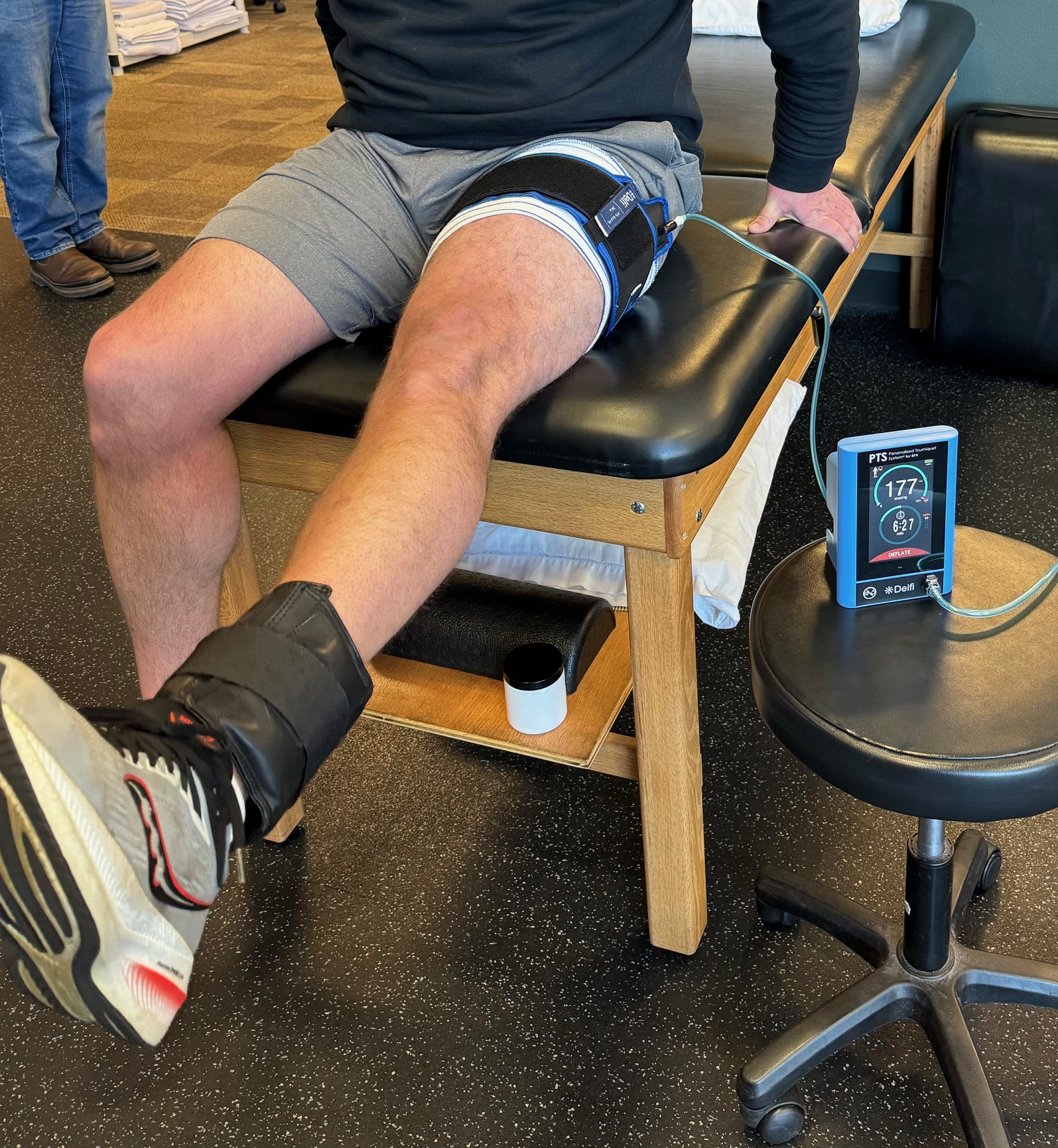
| Postoperative recovery is a crucial phase in any surgical journey. Patients often face challenges such as muscle atrophy, strength and power loss, and reduced mobility. However, in recent years, Blood Flow Restriction (BFR) training has become a vital resource in post-surgical care, pain, and general deconditioning for many patients. Using principles discussed below, it is revolutionizing rehabilitation and proving to be a game-changer in enhancing recovery time and outcomes. |
Understanding Blood Flow Restriction Therapy: First used on war veterans and amputees 20+ years ago, this modality has evolved and is now present in professional sports and throughout the Orthopedic Physical Therapy and Athletic training world. Blood Flow Restriction Therapy involves the controlled application of a surgical grade tourniquet or cuff to the limbs, restricting 100% of venous blood return and 50-80% of arterial blood flow to the limb. Percentage and exercise prescription are determined on an individual basis with a trained Physical Therapist. During exercise, the application of the cuff leads to a temporary reduction in oxygen supply to the muscles, creating a unique environment that stimulates muscle growth and strength. This allows for patients to gain hypertrophy in muscles that is otherwise impossible due to limitations following surgery including weight bearing or load bearing. How BFR Works: During BFR, specialized cuffs are placed around the patient’s affected limb, typically at the proximal part of the limb (closer to the body). These cuffs are inflated to a specific pressure, reducing blood flow out of the limb while allowing blood to continue flowing into the muscles. This restriction creates a hypoxic environment, triggering adaptive responses within the muscles. |
Benefits of BFR Therapy: Muscle Hypertrophy: BFR has been shown to induce muscle hypertrophy, even with lower resistance exercises. This is particularly beneficial for patients who may have limitations in their ability to perform traditional high-intensity workouts post-surgery. Strength Gain: Despite using lighter loads, BFR enables patients to achieve similar strength gains as high-intensity resistance training. This is advantageous for individuals with lower extremity conditions that may restrict the amount of weight they can lift during rehabilitation. Improved Endurance: BFR training has been linked to improved endurance and aerobic capacity, facilitating a quicker return to daily activities and sports. Accelerated Recovery: By promoting muscle protein synthesis and reducing muscle atrophy, BFR accelerates the recovery process, enabling patients to regain functional independence sooner. Pain Reduction: BFR has demonstrated its ability to alleviate pain and discomfort during rehabilitation, making it a more tolerable option for patients during the postoperative period. |
Rebound Physical Therapy has several therapists trained in BFR. They typically integrate BFR into a comprehensive rehabilitation program tailored to the patient’s specific needs and surgical procedure. The therapy is monitored closely to ensure optimal outcomes and minimize the risk of complications. Blood Flow Restriction Therapy is proving to be a groundbreaking intervention for postoperative rehabilitation. As research continues to support its efficacy, BFR has the potential to become a standard component of rehabilitation protocols, offering patients a faster and more effective path to recovery. Embracing innovations like BFR showcases Rebound’s commitment to enhancing patient outcomes and quality of life after surgery. |



